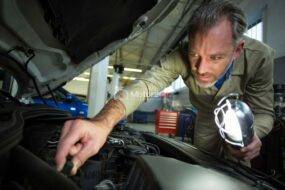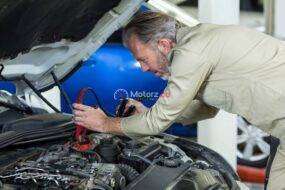Exhaust Manifold Cracks Signs and repair options. can be a troublesome issue for vehicle owners, causing a cascade of problems if left unaddressed. The exhaust manifold plays a crucial role in the efficient functioning of an internal combustion engine, and any cracks in this component can lead to decreased performance, increased emissions, and potential long-term damage to the engine.
Signs of Exhaust Manifold Cracks:
Loud Exhaust Manifold Cracks One of the most obvious signs of a cracked exhaust manifold is a loud, unusual noise coming from the engine. This noise is often a result of the escaping exhaust gases through the cracks. Cracks in the exhaust manifold can disrupt the proper flow of exhaust gases, leading to decreased engine performance. You may notice a reduction in power, sluggish acceleration, or poor fuel efficiency. Burning Smell If you detect a burning smell while driving, it could be a sign of exhaust gases leaking from the cracks in the manifold. This smell is a result of the hot gases coming into contact with other engine components.
Check Engine Light:
A cracked exhaust manifold can trigger the check engine light on your dashboard. Modern vehicles are equipped with sensors that monitor various aspects of the engine’s performance, and a malfunctioning exhaust system is likely to trigger a warning. In some cases, you may be able to visually inspect the exhaust manifold for cracks. However, this may require removing heat shields or other components obstructing the view.
Repair Options for Exhaust Manifold Cracks:
Welding If the cracks in the exhaust manifold are small and accessible, welding can be an effective repair option. Welding involves fusing the cracked parts together, restoring the integrity of the manifold. However, not all types of cracks can be successfully welded, and it may not be a permanent solution for severe damage. In many cases, especially if the cracks are extensive or located in critical areas, replacing the exhaust manifold is the recommended solution. Replacement parts can be sourced from the vehicle manufacturer or aftermarket suppliers. It’s important to use high-quality replacement parts to ensure longevity and proper function.
Manifold Repair Kits:
Some manufacturers offer manifold repair kits that include specialized epoxies or sealants designed to withstand high temperatures. While these kits can provide a temporary fix for minor cracks, they may not be a long-term solution for more significant damage. If you suspect issues with your exhaust manifold but are unsure about the extent of the damage, it’s advisable to seek professional inspection. Automotive technicians can use diagnostic tools and visual inspections to identify the specific issues and recommend the most appropriate repair or replacement options.
Preventive Measures:
Regular Maintenance Scheduled maintenance, including inspections of the exhaust system, can help identify potential issues before they escalate. Addressing small cracks early can prevent more extensive damage and costly repairs. Avoiding Over-tightening When installing or tightening bolts on the exhaust manifold, it’s crucial to follow the manufacturer’s specifications. Over-tightening can lead to stress on the manifold and increase the risk of cracks.
Using High-Quality Parts:
When replacing the exhaust manifold or any related components, using high-quality, OEM (original equipment manufacturer) or reputable aftermarket parts is essential. Inferior parts may not withstand the heat and stress of daily operation. High-quality parts are designed and manufactured to meet strict standards, ensuring they can withstand the heat, pressure, and stress associated with the operation of the exhaust system.
Conclusion
In conclusion, addressing Exhaust Manifold Cracks manifold cracks promptly is crucial for maintaining the overall health and performance of your vehicle. Whether opting for welding, replacement, or other repair methods, it’s essential to consider the extent of the damage and choose a solution that ensures the longevity and reliability of the exhaust system. Regular maintenance and cautious driving practices can also contribute to preventing exhaust manifold cracks and other related issues, ultimately extending the life of your vehicle’s engine.





